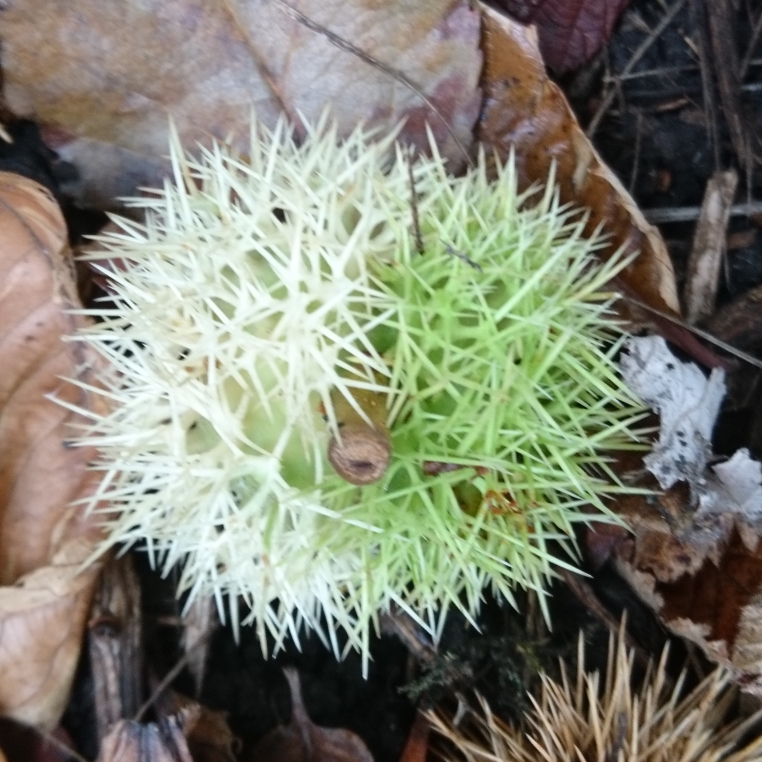
Castanea sativa 'Variegata'
Variegated Sweet Chestnut
This is a variegated form of the popular sweet chestnut. A substantial, long-lived deciduous tree, it produces an edible seed, the chestnut. It is also grown for firewood, garden and fencing timber. The tree requires a mild climate and adequate moisture for good growth and a good nut harvest. A mature tree has an enormous girth and deeply furrowed spiralling bark. Catkins appear in early summer and by autumn the female flowers develop into spiny capules, designed to deter squirrels and other seed predators from getting to the large brown nuts within that are shed inlate autumn.
Contributed by @HG01
-
Full sun to partial shade
-
Occasional watering
-
Full Frost Hardy: 5F (-15°C)
-
Moist and free draining
Common name
Variegated Sweet Chestnut
Latin name
Castanea sativa 'Variegata'
type
Tree
family
Fagaceae
ph
5.0 - 7.0 Acid - Neutral
Plant & bloom calendar
-
Best time to plant
full grown dimensions
 7.00 M
30.00 M
7.00 M
30.00 M
Castanea sativa 'Variegata'
This is a variegated form of the popular sweet chestnut. A substantial, long-lived deciduous tree, it produces an edible seed, the chestnut. It is also grown for firewood, garden and fencing timber. The tree requires a mild climate and adequate moisture for good growth and a good nut harvest. A mature tree has an enormous girth and deeply furrowed spiralling bark. Catkins appear in early summer and by autumn the female flowers develop into spiny capules, designed to deter squirrels and other seed predators from getting to the large brown nuts within that are shed inlate autumn.
Planting
From Early Spring TO Early Spring
Plant in a good well-drained, slightly acid loam in a sunny position. Ideal pH is 6. Allow at least 10 meters of clear ground all around the planting and double this distance away from buildings. Dig a hole twice the width of the container or rootball, and plant at the same depth as the tree was growing in the container. Water well and mulch to keep grasses and weeds away.








